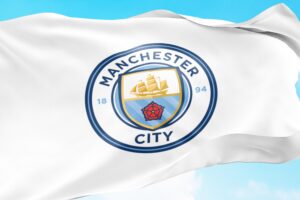How PostNL used cycling sponsorship to power employee engagement

When PostNL announced its cycling sponsorship of a UCI team, most assumed it was about visibility. A new name on the jersey. A boost to brand awareness. But they’d be wrong.
As Erik van Leeuwen, PostNL’s Sports Partnerships Lead, explains, this wasn’t just about customers, it was also about colleagues. “Our employees are our greatest brand ambassadors,” he says. “So in this sponsorship, they play an important role as well.”
Built by employees, for employees
At the heart of the strategy is a belief that meaningful sponsorship starts internally. PostNL didn’t just sign a deal and blast the message outward. Instead, they began with sounding boards, groups of mail and parcel staff from across the country, asking what would genuinely interest and inspire them.
Cycling sponsorship came out on top, also because of the brand’s focus on Belgium, a market where cycling is extremely popular. But it wasn’t just the hardcore 240km weekend riders. "We are the favourite deliverer that is visible every day throughout the Netherlands with parcels and mail and many of them do that by bike. We wanted to create experiences for everyone,” van Leeuwen says. “From the Tour de France-level fans to those who just want a 5km ride and a coffee.”
From this insight came a full internal activation plan. PostNL used activation budgets to fund train tickets for hundreds of staff to attend races. They created “fan boxes” at finish lines and invited employees to watch, cheer, and connect. “Some people couldn’t afford the travel,” van Leeuwen explains. “But they wanted to be part of it. So we made it happen.”
Activating purpose through participation
Employee engagement went far beyond watching. PostNL’s own data analysts joined forces with the team’s performance staff for hackathons, using postal route modelling tools to help cyclists optimise their training. “These weren’t side projects,” van Leeuwen notes. “They were real collaborations that gave our staff pride in what they do.”
And when employees joined races, they didn’t do so in generic gear. They rode in full team kits, cycling alongside their CFO and line managers. “For many, it was the first time they’d met a senior executive in person,” van Leeuwen recalls. “It was completely levelling. Everyone looked the same, rode the same route, shared the same coffee break.”
This sponsorship, van Leeuwen says, is about building a stronger internal culture, driving pride, retention, and productivity across a 35,000-person workforce. “If you work for other logistics firms, you might get a ticket to an event,” he says. “But here, you meet the team. You ride with them. You wear the jersey. That’s not something you forget.”
For more on this topic consider, Cycling sponsorship: the challenges and opportunities, here.
A culture reflected in sponsorship
One of the clearest examples of PostNL cycling sponsorship aligning with workplace values came at board level. "When the sponsorship began, our Board of Management made it non-negotiable:
The team had to commit to equal pay between its male and female riders because PostNL has equal pay, and expects its partners to reflect the same.
“It’s not just about visibility. It’s about values. If a team doesn’t reflect our culture, I don’t think we should sponsor them. ”
Internal communication strategy
Getting the message out across 35,000 employees isn’t easy. The head office has digital screens and newsletters, but PostNL’s spreads it’s sponsorship message to staff through local depots and distribution hubs.
Communication Channels:
- A custom workforce app with cycling updates and event invites
- Depot managers as messengers, sharing printouts and calendars directly with staff
- Word of mouth and returning participants to build momentum year to year
- Targeted internal newsletters and screens, both at HQ and in the field
There’s even a newsletter specifically for staff who want updates on the cycling sponsorship. “You can’t rely on one channel,” van Leeuwen says. “You have to meet people where they are.”
A lesson in listening
Asked what advice he’d offer other companies, van Leeuwen is clear: stop pushing, and start listening. “We don’t assume what people want. We ask them. Twice a year. We run internal research, we meet, we talk." This is the same approach employed by EY as part of their sponsorship of the arts.
That responsiveness is baked into their planning. Whether it’s a fan box for spectators or a Sunday ride from depot to market square, activations are co-created with staff. And when something doesn’t work, they adapt. “It’s not always perfect,” he admits. “But if you listen well, you learn fast.”
For more practical sponsorship tips and expert insights register here for a free account with The Sponsor.









